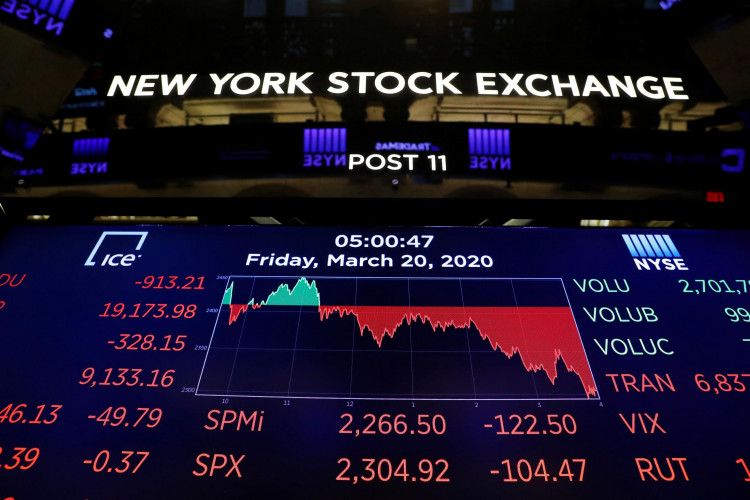Economists agree more than a million American workers lost their jobs over the past week due to the business-killing effect of the COVID-19 pandemic and the only question now is exactly how many million Americans were fired and remain unemployed.
They estimate jobless claims to come in at a minimum of one million to a high of five million. Either figure will be record-breaking since the U.S. has never before seen one million unemployment claims in only a few weeks.
The biggest layoffs are expected to come from the restaurants, leisure, and retail industries. In the financial crisis of 2009-2009, one-week claims peaked at about 650,000. On Wednesday, California Gov. Gavin Newsom said the state has seen one million unemployment claims in less than two weeks as the pandemic has led to businesses closing across the state.
"Thursday's claims are going to certainly show the largest spike in history," said BMO fixed income strategist Jon Hill. "I think the bulk of the expectations are between 1.5 and 3 million. If people see a low 700,000, they're just going to say next week is going to be worse."
Six of the country's top banks estimate weekly unemployment claims ranging from fewer than one million to a staggering four million. Claims of this massive size has never been seen before in U.S. history.
Citi is the most pessimistic with estimates of more than four million claims. Morgan Stanley expects jobless claims to hit 3.4 million. Ellen Zentner, its chief U.S. economist said job losses of more than three million in one week is "incredible."
Goldman Sachs expects unemployment claims will reach a high of 2.25 million. Bank of America forecasts 3 million due to the unprecedented layoffs. Pantheon Economics forecast losses ranging from two to three million. UBS, the most optimistic, forecast job losses of only 860,000.
The unemployment claims forecasts were so horrific the Trump administration is said to have asked state officials to delay releasing accurate unemployment counts to avoid damaging Trump's re-election chances.
All these forecasts totally eclipse the current record of nearly 700,000 unemployment claims set in 1982. It's also worth noting the worst month during the financial crisis of 2008-2009 saw nonfarm payrolls plunge by 800,000. The massive unemployment will hit the U.S. economy hard.
Morgan Stanley forecasts U.S. GDP will plummet an unheard of 30.1% in the second quarter following a sharp fall in activity in March. This historic plunge could push the unemployment rate from current historic lows to an average of 12.8%, one of the highest on record since the 1940s.
"What investors really need to gain confidence into repositioning for growth is data that suggests the ... outlook for risks for the coronavirus itself is improving," said Todd Jablonski, chief investment officer of Principal Portfolio Strategies at Principal Global Investors.
"I think it's key to not apply pre-crisis fundamentals against post-crisis prices to try to determine where value sits."
This massive jump in unemployment was unimaginable for a jobs market that had seen continuous monthly growth over the past 11 years until February. The unemployment insurance claims report from the Department of Labor will show claims for one week ending March 21.






